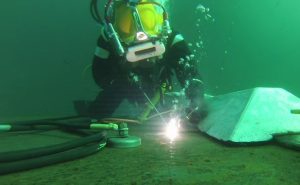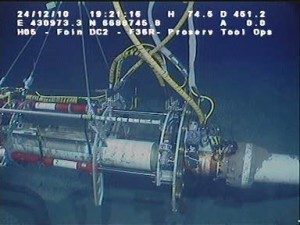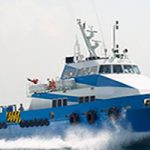PIPELINE INSPECTION, MAINTENANCE AND REPAIRS SERVICES
We provide offshore and onshore Pipeline Inspection, Maintenance and Repair Services that cut across the following, but not limited:
 WELD INSPECTION
WELD INSPECTION
After metal pieces are welded, an important and necessary step is to inspect the quality of the weld to ensure satisfactory performance when our clients are using their facilities and/or structures, hence, various test procedures are usually followed to perform a weld in specific. An ideal weld inspection procedure is Non-Destructive Testing (NDT), which helps to evaluate the weld without causing any damage. Our major types of weld inspection procedure are:
- Remote Visual Inspection[RVI]
- X-ray inspection
- Ultrasound inspection
- Liquid penetration inspection
 PIGGING
PIGGING
Pigging in oil and gas pipeline means the method of using a device called “pigs” to perform different maintenance operation. Pigging is done with pigs without stopping the flow of the product in the pipeline. Pigging include, but, not limited to cleaning and inspecting the pipeline. This is achieved by inserting the pig launcher /launching station in which an oversized section in the pipeline, reducing to the normal diameter. The launching station is then closed and the pressure-driven flow of the product in the pipeline is used to push the pig along down the pipe until it reaches the receiving trap which is also called the pig catcher/receiving station.
INTELLIGENT PIGGING
Intelligent pigging is an inspection technique whereby an inspection probe, often referred to as a smart pig, is propelled through a pipeline while gathering important data, such as the presence and location of corrosion or other irregularities on the inner wall of the pipe.
Traditionally, pigging was used purely to clean pipelines. The pig was simply placed in one end of a pipeline and pushed through the line by the product flow. It scraps the side of the pipe as it travels, removing dirt and debris as it goes. What makes intelligent pigging different is the smart pig are capable of performing advanced inspection activities as they travel along the pipe, in addition to just cleaning it. Smart pigs use non-destructive examination technique such as ultrasonic testing, and magnetic flux leakage testing erosion, metal loss, pitting, weld anomalies, and hydrogen induced cracking, among others. They are also able gather data on the pipeline’s diameter, curvature, bend, temperature.
Smart pissing provides a number of advantages over forms of pipeline inspection. It allows pipelines to be cleaned and inspected without having to stop the flow of product. It also allows the pipeline to be completely inspected without having to send inspectors down its entire length. It provides cleaning and inspecting at the same time, saving companies both time and money.
 LEAK DETECTION AND REPAIR
LEAK DETECTION AND REPAIR
Pipeline leak detection is the method to determine if and in some cases a leak as occurred in systems which contain liquid [water and crude] and gases. Most common of leak detection are hydrostatic testing, infrared, and laser technology after pipeline installation and leak detection during service.
The main purpose of Leak Detection System (LDS) is to assist pipeline collectors to detect and localize leaks so as to repair it.
LSD are divided into internally and externally based type in which the internal based use field instrumentation such as flow, pressure or fluid temperature sensor to monitor pipelines details while external based systems use another instrumentation such as infrared radiometers or thermal cameras, vapor sensors, acoustic microphones or fiber-optic cables to monitor external pipeline details.
Get in Touch with Us!



















